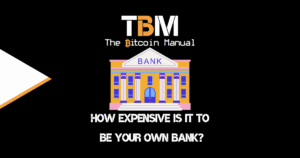Upgrades
Home » Behind The Bitcoin » Upgrades
Time For An Upgrade
Upgrades to the Bitcoin blockchain are no small thing and when you’re dealing with the future of the financial system, you can’t just do upgrades willy-nilly.
Serious consideration and debate will happen on how and what these changes will be, which has sometimes lead to a split or “hardfork” where a new protocol is made. However, those hard forks often became irrelevant as the majority decided to stick with the Bitcoin we know today.
Usually, someone in the Bitcoin Core Development Group will put forward a proposal for an upgrade and if the majority of miners agree then it will be put in place on the main Bitcoin chain. These types of upgrades are known as a “soft fork”. These upgrades are a huge undertaking between a global network of developers!
Here is a brief history of the upgrades that have happened on the Bitcoin blockchain.

Bitcoin XT - 2014
The proposal here was to increase the number of transactions per second on the Bitcoin chain from 7 to 24 and increasing the block size to facilitate this from 1MB to 8MB.
This was a very contentious one among the developers due to the increased memory needed for nodes to store the blockchain history on and ultimately, support for Bitcoin XT faded and it never got the majority of miner votes.
SegWit - 2017
SegWit is short for Segregated Witnesses and the proposal for this upgrade was to separate (segregate) transactions (witnesses) in to two parts so that more transactions could be put in to a block. This would then increase the whole capacity of the Bitcoin chain whilst keeping block sizes small.
This caused one of the biggest disputes in Bitcoin’s history lasting from 2015 to 2017, known as the Bitcoin Civil War, and eventually lead to a hard fork known as Bitcoin Cash. Those in favour of the larger block sizes moved to Bitcoin Cash but the majority stayed with Bitcoin.
Taproot - 2021
The Taproot upgrade is aptly named as it proposed changes outlined in the bullet points below. The decision to implement this upgrade was unanimously supported by miners and with good reason. It was one of the biggest upgrades for Bitcoin and had many benefits to scale on both base layer and 2nd layer.
- Increase privacy for multi-signature addresses (wallets that require more than one private key to approve a transaction)
- Scale up smart contracts for DeFi applications to be built on top of Bitcoin’s base chain by enabling Discrete Log Contracts (DLCs) – this is particularly relevant for the Lightning Network
- Reduced transaction fees due to smaller transaction sizes on blocks
Share with a friend
If you thought this information was helpful why not share it on your favourite social media network and encourage others to learn more about Bitcoin
The latest news from our blog

How Expensive Is It To Be Your Own Bank?
Every month, millions of people quietly hand over their hard-earned money to banks through fees that have become so normalised we barely notice them. Account

What Is Proof of Liabilities?
Two cycles ago, few in the Bitcoin community knew or cared about Michael Saylor and his software analytics company, Microstrategy (now renamed to just “Strategy”).

Why Corporate Bitcoin Competition is Good for Plebs
The Bitcoin space is buzzing with news of yet another corporation announcing its “Bitcoin treasury strategy.“ It’s the hottest trend since slapping an AI on
